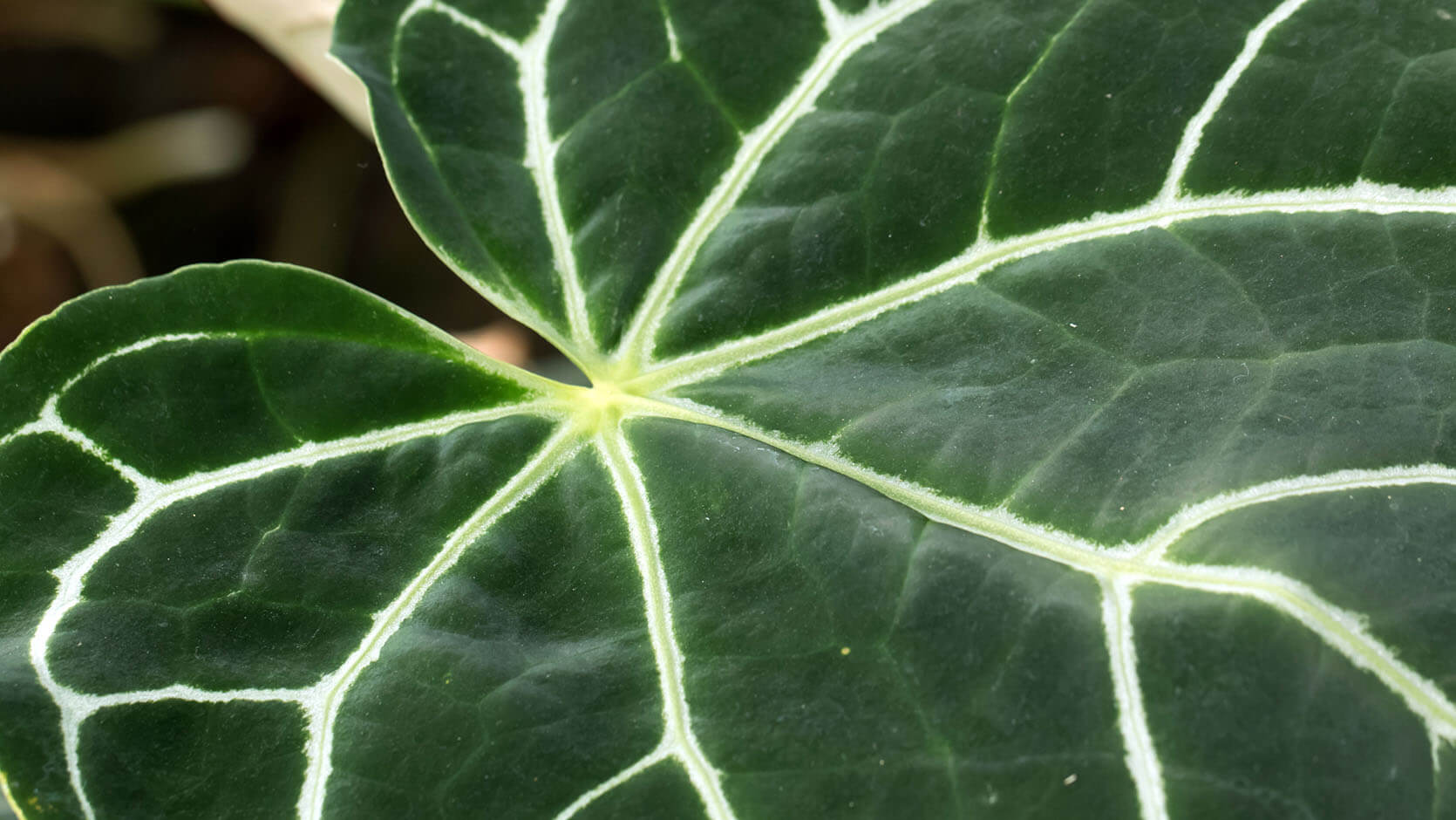African Violet (Streptocarpus sect. Saintpaulia)
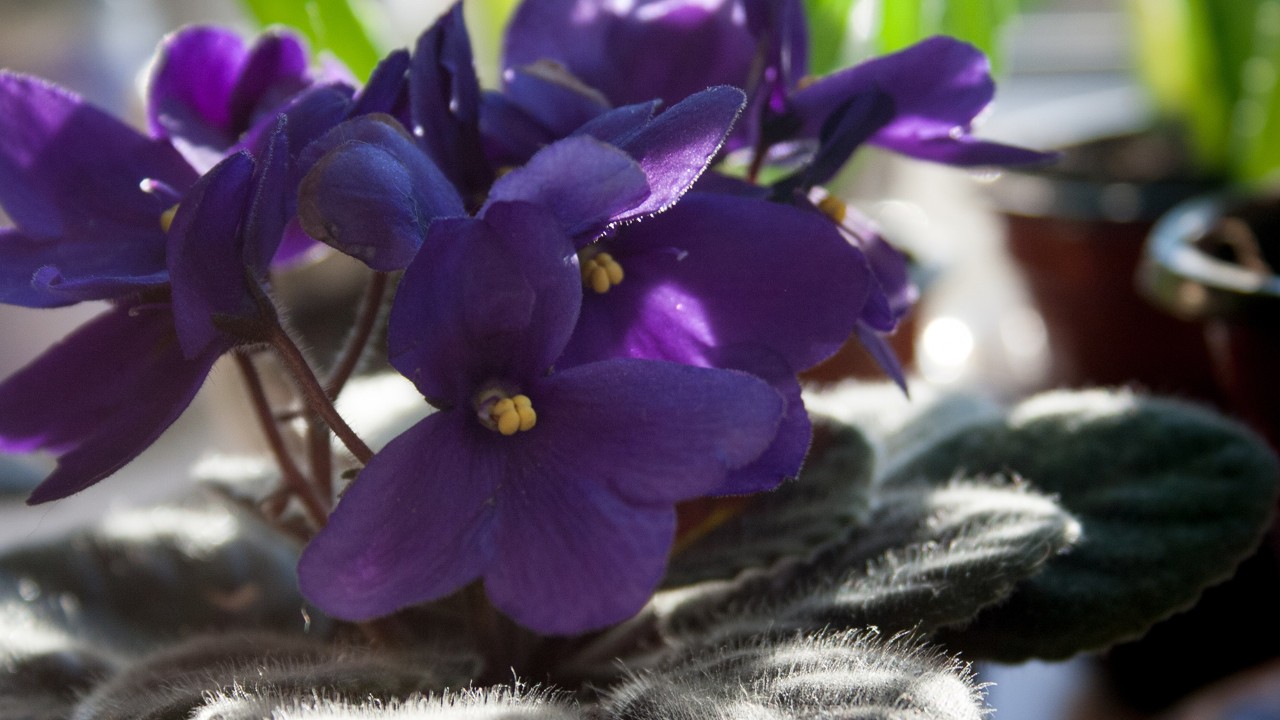 African violet
African violet
Ideal for sprucing up and adding colour to small spaces, the African violet is a popular houseplant for its compact size and everlasting flowers available in varying shades of pink and violet. Its smooth, velvet-textured petals make it attractive to many, while its thick, dark green foliage with tiny white hairs, feels fuzzy to one’s touch!
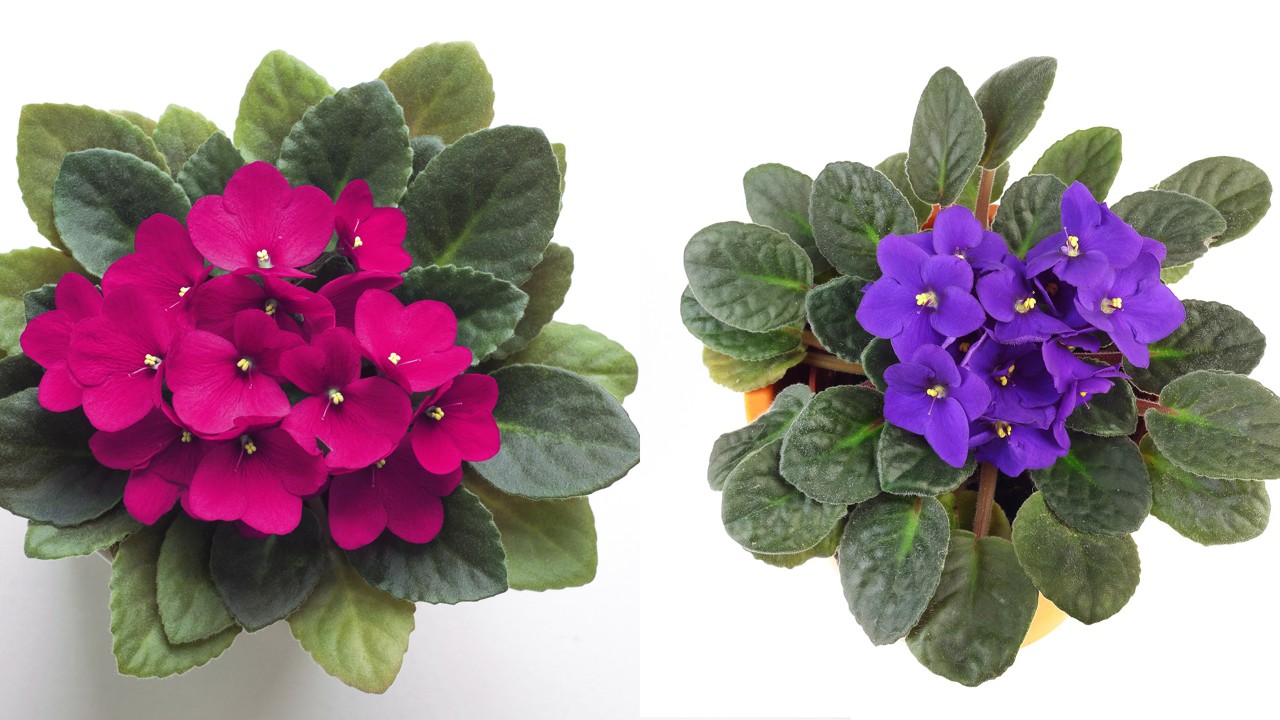 Flowers of African violet in dark pink (left) & indigo (right)
Flowers of African violet in dark pink (left) & indigo (right)
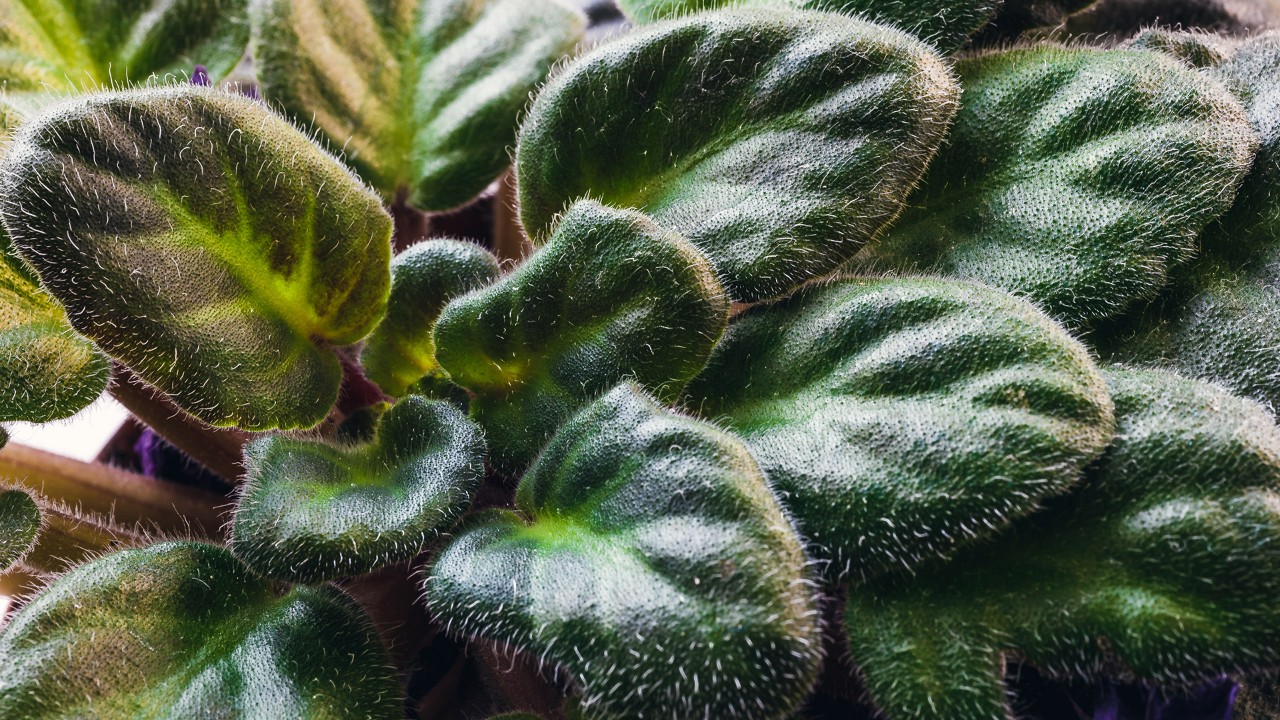 Fuzzy dark green foliage
Fuzzy dark green foliage
Native to the forests of Tanzania and Kenya, African violets grow naturally between rocks with pockets of soil under tree canopies. At home, if the plant is in an air-conditioned environment, you may want to place it amongst other plants or frequently mist the area surrounding it to ensure optimum humidity. African violets will flower consistently if you place yours near a window, mimicking its natural environment with filtered sunlight. To avoid crown or leaf rot, water directly on the soil surface, lifting the leaves gently if necessary.
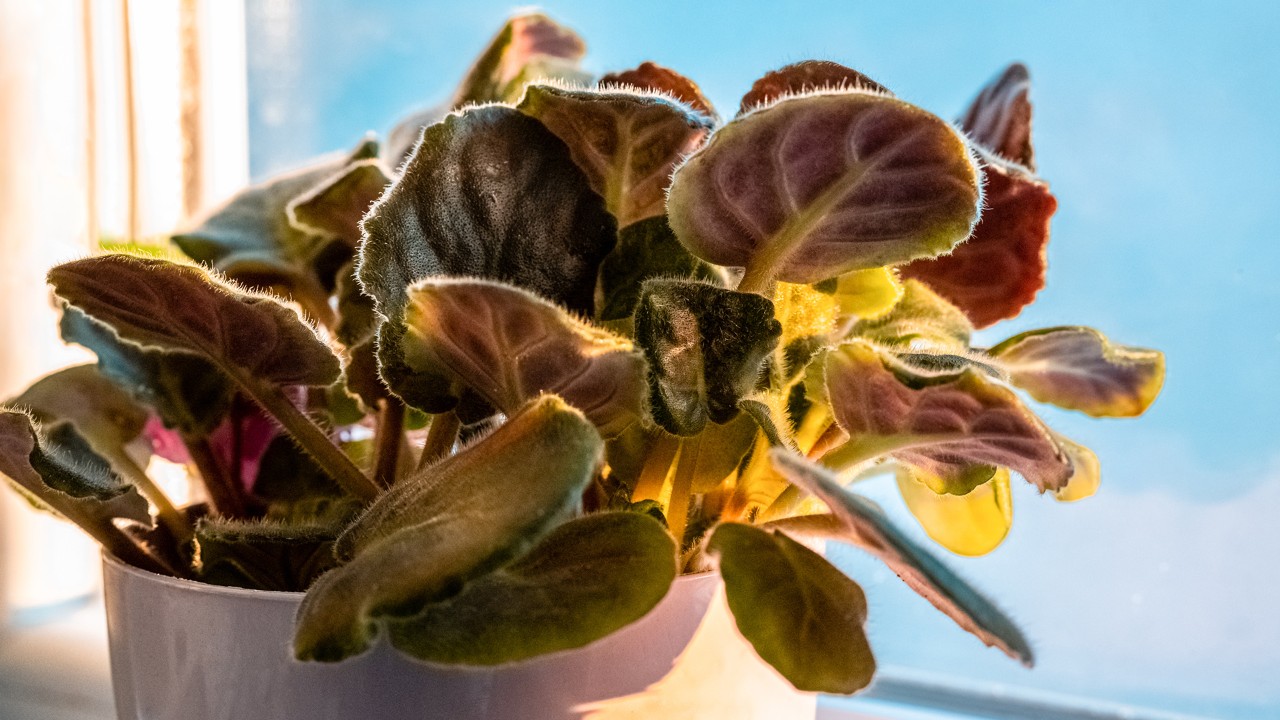 African violet on a windowsill with filtered light
African violet on a windowsill with filtered light
Consider adding some colour to your houseplant collection with an African violet! When you’re a proud owner of one, a fun experiment that you can do is to multiply your African violet via leaf propagation, where a mature leaf is used to produce additional plantlets!
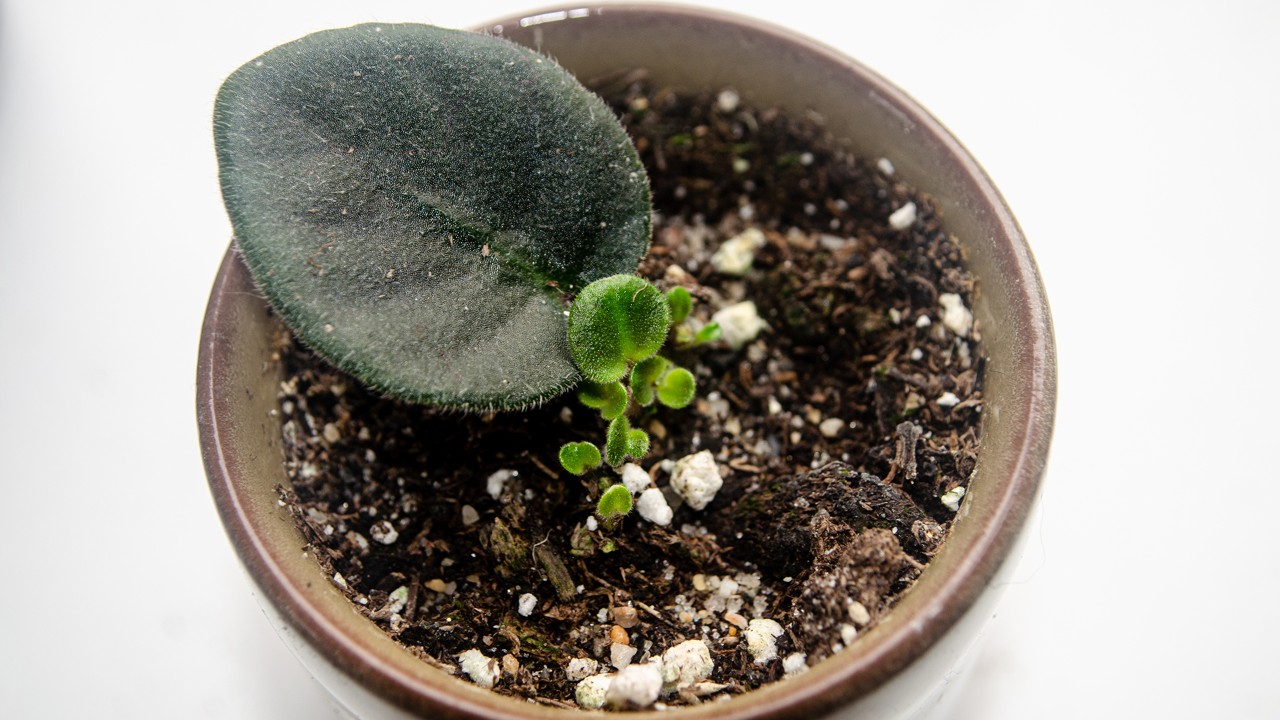 Plantlets from a leaf cutting section
Plantlets from a leaf cutting section
Check out the video to learn more about caring for your African violet.
| Botanical Name | Streptocarpus sect. Saintpaulia |
|---|---|
| Common Name(s) | African violet, cape marigold |
| Plant Type | Herbaceous plant |
| Mature Size | 6 to 15 cm in height, 6 to 40 cm wide |
| Light | Bright, indirect light for flowering |
| Water | Let soil surface dry between periods of watering. Water directly on the soil surface. |
| Soil | Peat-based soil mix |
| Flowers | Flowers all year round – comes in a variety of colours |
| Toxicity | No known toxicity |
Written by: Agatha Koh, Manager (Education, Programming & Events)
Agatha has spent the last ten years in a green paradise of every kind – greenhouses, orchards, food forests, therapeutic gardens, nature parks. Her days at the Gardens continue to be happily plant-filled as she shares her love for plants with fellow green thumbs and floral fanatics!
